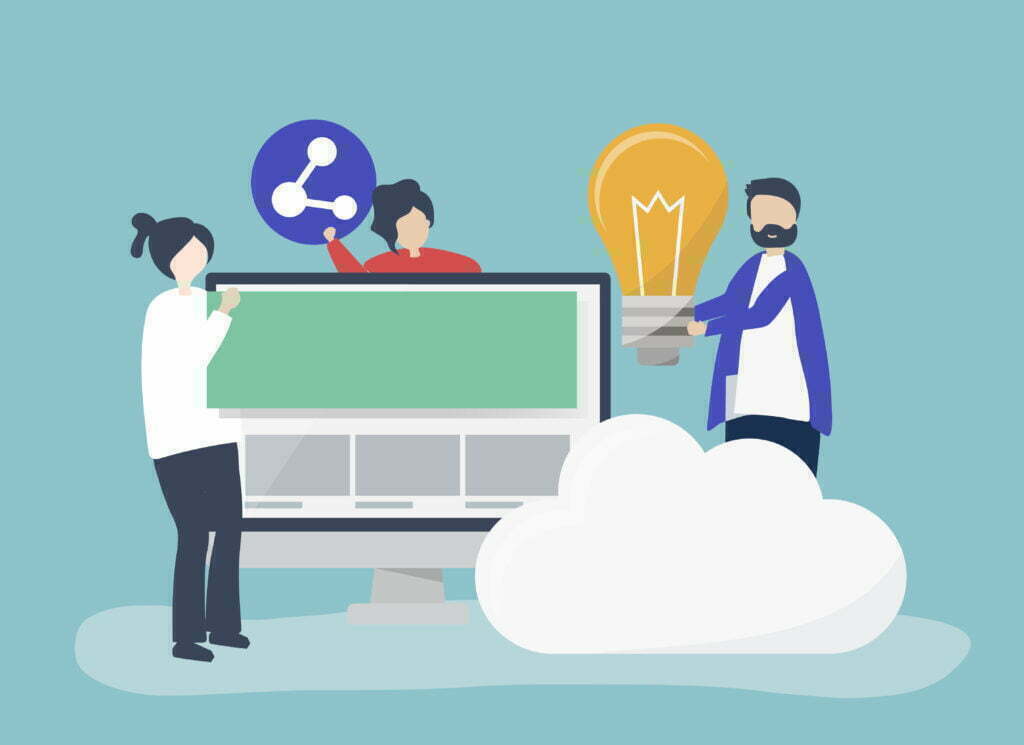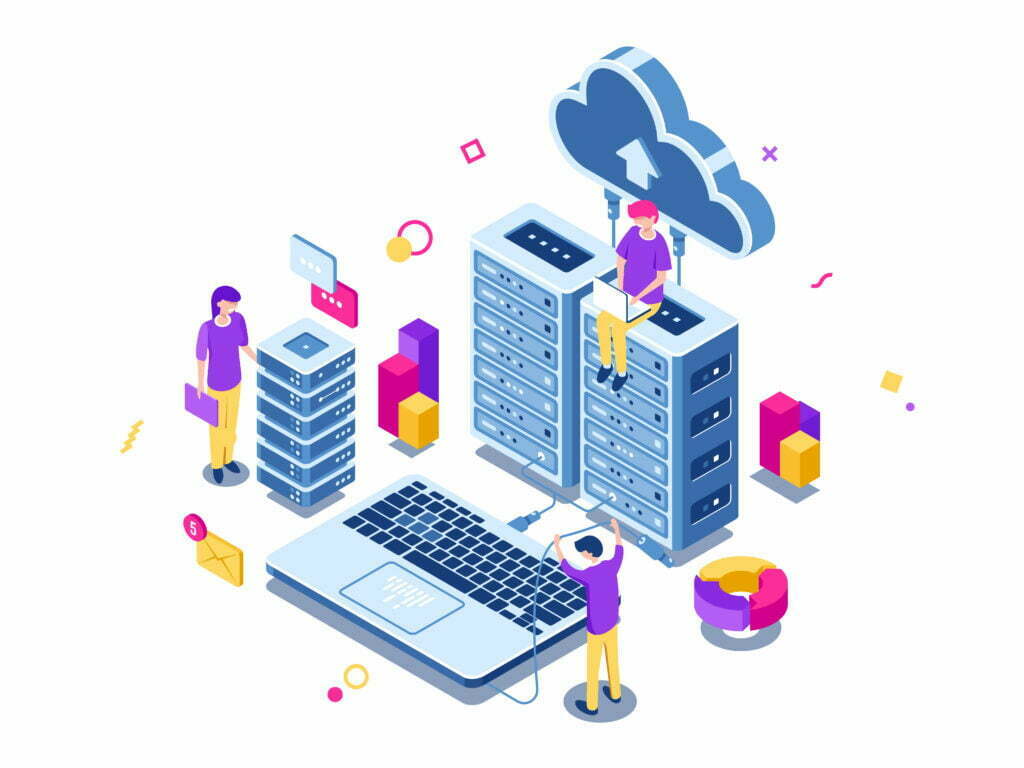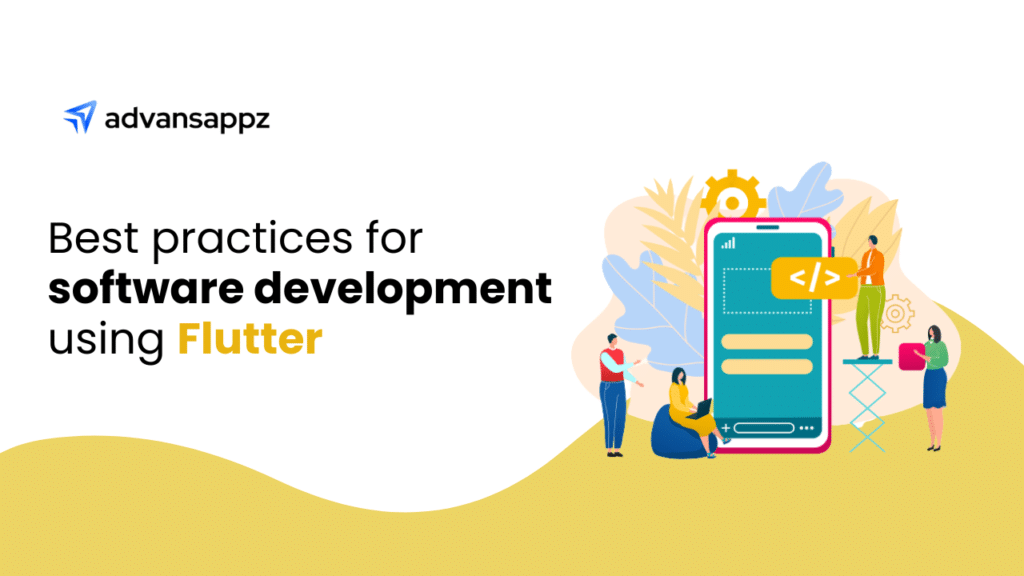
Cloud computing has changed how organizations operate by providing on-demand internet access to computing resources and services. With the growing adoption of cloud computing, the industry is witnessing new trends and innovations shaping its future. In 2023, cloud computing is expected to continue to evolve and shape the future of technology.
Even the report by Gartner, Inc. forecasts that in 2023, cloud spending by the worldwide public will grow 20.7% to a total of $591.8 billion, up from $490.3 billion in 2022.
Before we hop on to the future cloud computing trends, let’s understand what cloud computing is and why it’s crucial.
What is cloud computing?
Cloud computing means delivering computing resources, such as servers, storage, databases, software, and applications, over the internet on a pay-per-use basis. In other words, instead of hosting and managing IT infrastructure and services in-house, businesses and individuals can use a third-party provider’s computing resources, accessed via the internet, to achieve economies of scale and flexibility.
There are three types of cloud computing:
Infrastructure as a Service (IaaS): Servers, storage, and networking that have been automated are made available by providers as a service. Customers can configure and manage their software and applications.
Platform as a Service (PaaS): Providers offer a complete development and deployment platform for customers to build and deploy their software and applications.
Software as a Service (SaaS): Internet-delivered providers offer comprehensive software programs like email, customer relationship management (CRM), and workplace productivity tools.
Why is cloud computing important?
Scalability: Cloud computing gives the ability to scale up quickly or down computing resources based on the needs of the business. This allows companies to respond more effectively to changes in demand without investing in expensive hardware and software infrastructure.
Cost Savings: Using cloud computing software helps businesses eliminate the need to purchase and maintain expensive hardware and software, which can result in significant cost savings. Additionally, cloud providers typically offer pay-as-you-go pricing models, which allow businesses to only pay for the resources they use.
Flexibility: Businesses can work from anywhere, at any time, as long as they have an internet connection. This provides greater flexibility for employees, leading to improved productivity and collaboration.
Security: Cloud providers typically have more robust security measures than most individual businesses. This can help protect sensitive data from cyber threats and reduce the incidents of data breaches.
Innovation: Cloud computing enables businesses to quickly and easily experiment with new technologies and tools without investing in expensive infrastructure. This can help companies stay ahead of the competition and drive innovation.
Moving forward, we will discuss the top 10 cloud computing trends expected to shape the industry in 2023.
What are the trends in cloud computing?
Cloud computing trends #1 – Multi-Cloud Adoption
Multi-cloud adoption is one of the top cloud computing trends in 2023. Multi-cloud means using multiple cloud providers to meet different business needs. This approach offers flexibility and agility regarding workload management and cost optimization. In 2023, we can expect to see more firms adopting a multi-cloud strategy to mitigate risks and maximize the benefits of cloud computing.
Cloud computing trends #2 – Edge Computing
Edge computing is among the most popular cloud computing trends. Edge computing includes processing data closer to the source than sending it to a centralized cloud server. This approach reduces latency and improves performance, making it ideal for real-time applications such as IoT (Internet of Things) and AI (Artificial intelligence). In the coming years, edge computing is expected to play a significant role in the cloud computing landscape.
Cloud computing trends #3 – Serverless Computing
Serverless computing is a model in which cloud providers manage the infrastructure and automatically allocate resources based on application demand. This approach eliminates the need for businesses to manage servers and allows them to focus on their core competencies. As a result, serverless computing will soon become one of the most popular cloud computing trends as businesses seek to improve their agility and reduce costs.
Cloud computing trends #4 – Cloud-Native Applications
Cloud-native applications are designed to run on the cloud infrastructure, using microservices architecture, containerization, and other cloud-native technologies. These applications are more flexible, scalable, and resilient than traditional applications, making them ideal for cloud environments. We expect to see more businesses adopting cloud-native applications to take advantage of the benefits of cloud computing.
Cloud computing trends #5 – Artificial Intelligence and Machine Learning
Artificial Intelligence (AI) and Machine Learning (ML) are expected to continue to be major cloud computing trends in 2023. Cloud providers invest heavily in AI and ML to offer intelligent services such as predictive analytics, natural language processing, and image recognition. We will see more businesses leveraging these services to enhance their operations and gain a competitive benefit in 2023.
Cloud computing trends #6 – Cloud Security
As cloud adoption grows, security concerns remain a top priority for businesses, making cloud security gain traction among cloud computing trends in 2023. Cloud providers continuously improve their security standards to save against cyber threats and data breaches. In 2023, we anticipate seeing more businesses adopting cloud security solutions, such as cloud access security brokers (CASBs) and identity and access management (IAM) tools, to ensure their data is secure.
Cloud computing trends #7 – Hybrid Cloud
A hybrid cloud refers to a mixture of public and private cloud environments. This system offers the best of both worlds, allowing businesses to benefit from the scalability and cost-effectiveness of public clouds while keeping critical data and applications in a private cloud. In the future, we expect to witness more businesses adopting a hybrid cloud strategy to meet their unique business needs.
Cloud computing trends #8 – Internet of Things (IoT)
The Internet of Things (IoT) is another trend expected to drive cloud computing in 2023. IoT involves connecting devices to the internet to collect and analyze data. Cloud computing provides the infrastructure and analytics tools to manage this data and gain insights into user behavior and preferences. In the coming years, more and more businesses will leverage IoT and cloud computing to drive innovation and improve customer experience.
Cloud computing trends #9 – Quantum Computing
Quantum computing is still in its infancy, but it has the potential to revolutionize the cloud computing industry. It offers the ability to process data at incredible speeds and solve complex problems that are impossible with traditional computing. Hence, we foresee more cloud providers experimenting with quantum computing and offering quantum computing services.
Top stats and predictions for cloud computing current trends

Cloud computing has become essential to the technology industry, offering businesses and individuals access to flexible, scalable, and cost-effective computing resources. The cloud computing industry is expected to continue its rapid growth in the coming years, with numerous new trends and technologies set to emerge. Here, we’ll look at the top 30 stats and predictions for cloud computing trends.
- According to a report by Allied Market Research, the global cloud computing market is expected to reach $1,251.09 billion by 2028, growing at a CAGR of 15.9% from 2021 to 2028.
- The number of cloud service providers is expected to increase significantly by 2023, with more than 90% of organizations expected to use cloud services in some capacity.
- The adoption of multi-cloud and hybrid cloud architectures is expected to continue to increase, with 90% of organizations projected to use a mix of public and private clouds by 2023.
- According to a report by Gartner, the public cloud services market is projected to grow by 23.1% in 2023, reaching a total value of $623.3 billion.
- The SaaS (Software-as-a-Service) market is projected to grow at a CAGR of 18.3% between 2021 and 2028, reaching a total value of $357.4 billion by 2028.
- By 2023, it is predicted that 70% of enterprises will be running some form of containerized applications in production, up from less than 20% in 2020.
- According to a report by IDC, 60% of enterprise IT infrastructure will be off-premises by 2023.
- The adoption of serverless computing is expected to increase significantly, with 50% of global enterprises expected to be using serverless computing by 2023.
- The use of edge computing is expected to increase, with 75% of enterprise-generated data expected to be processed outside of traditional centralized data centers by 2025.
- The global edge computing market is projected to grow at a CAGR of 35.1% from 2021 to 2028, reaching a total value of $43.4 billion by 2028.
- According to a report by MarketsandMarkets, the global cloud security market is projected to grow at a CAGR of 14.4% from 2021 to 2026, reaching a total value of $68.5 billion by 2026.
Also Check:- Cloud Technology in ERP
Wrapping up
Cloud computing is expected to continue to evolve and shape the future of technology in 2023. As these trends continue to develop, businesses that embrace them will gain a competitive advantage and thrive in the digital age. To keep up with the trends of cloud computing, you can talk to the experts of advansappz, one of the leading names in cloud security solutions.
Frequently Asked Questions
The key trends for 2023 include edge computing, quantum computing integration, multi-cloud strategies, advanced cloud security, and AI integration.
Edge computing reduces latency and enhances real-time data processing, crucial for applications like IoT, autonomous vehicles, and smart cities.
Multi-cloud strategies offer flexibility, redundancy, and cost optimization by leveraging services from multiple cloud providers.
Quantum computing will revolutionize data encryption, optimization, and simulation, solving complex problems exponentially faster than traditional computers.
AI integration in cloud services will enhance automation, decision-making, and user experience, offering predictive capabilities and valuable insights.












